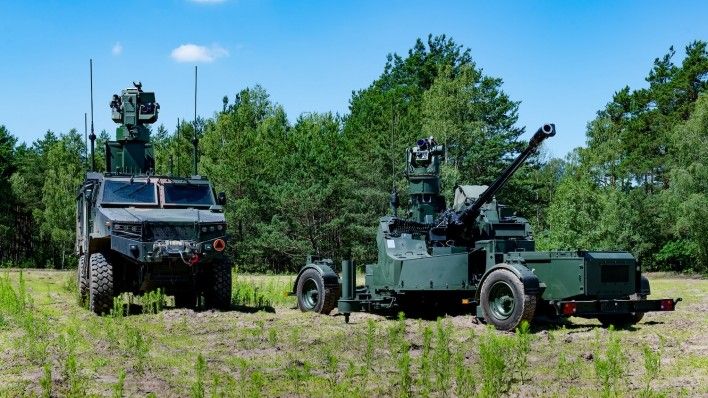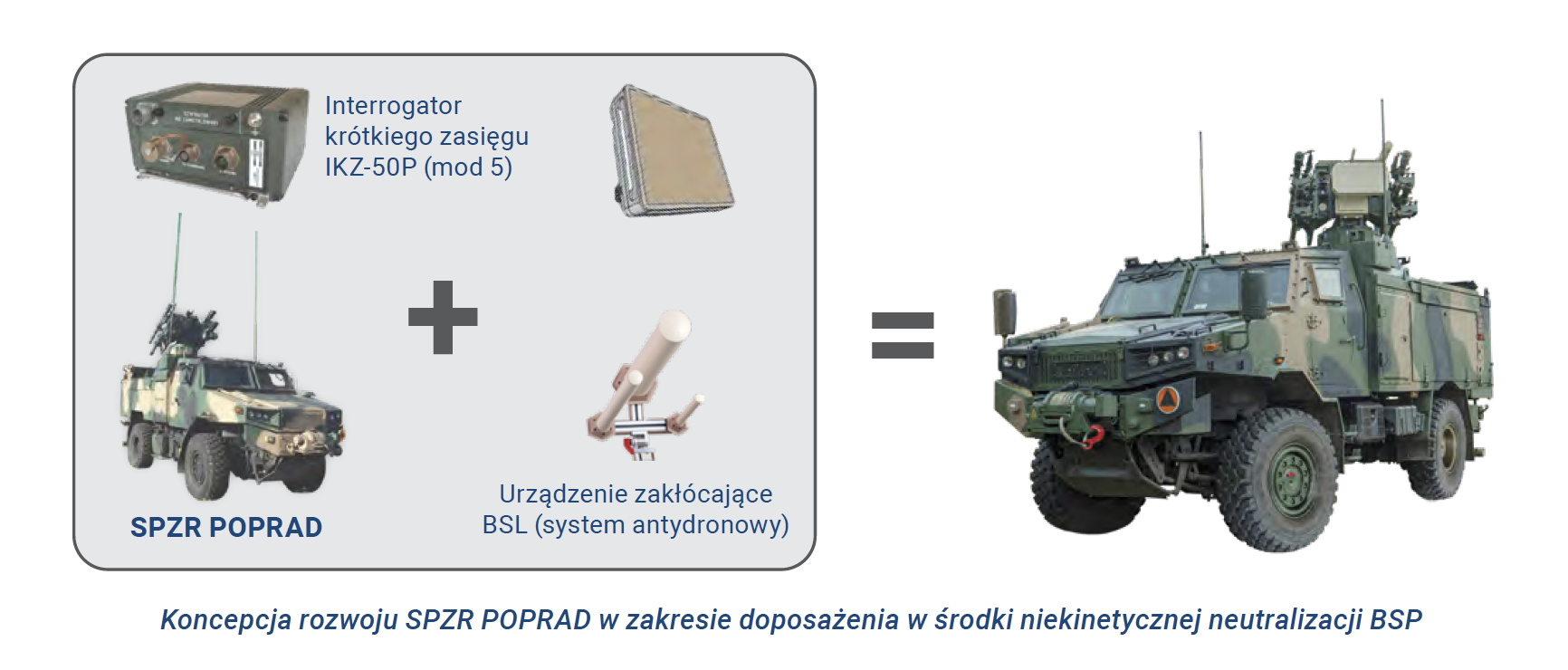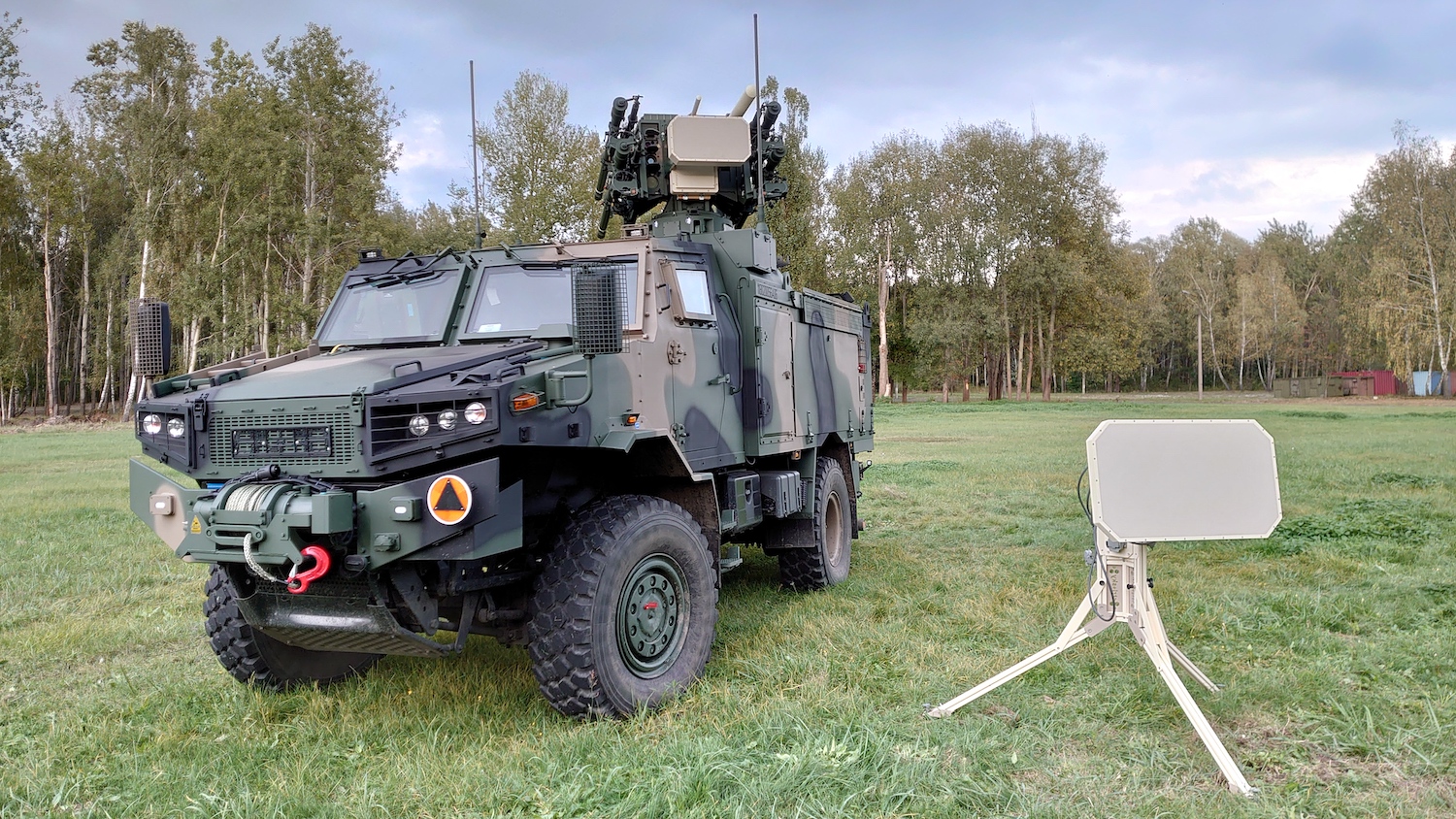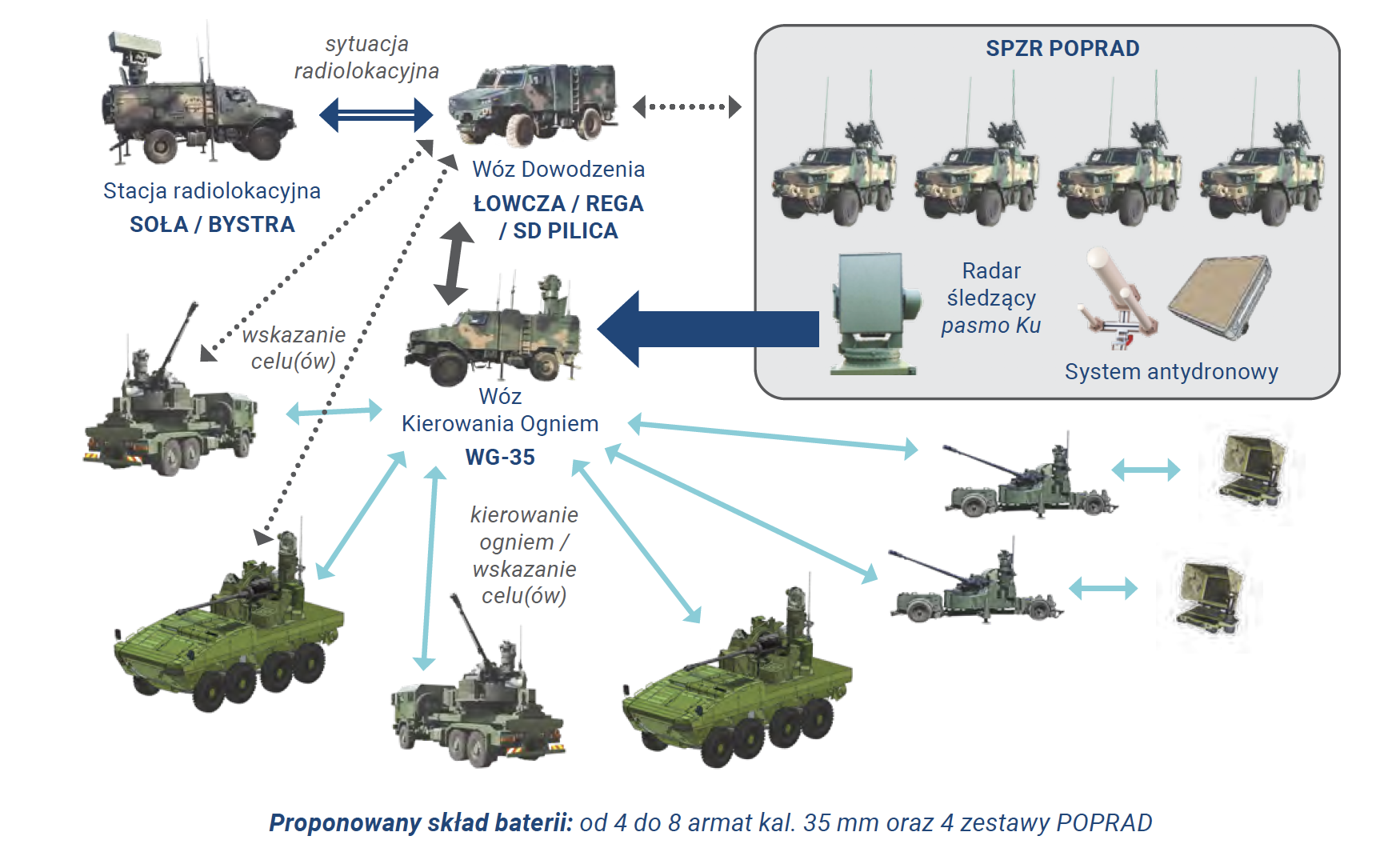Strona główna
Polish VSHORAD Air Defence Systems with Counter-UAS Capabilities

PIT-RADWAR company that is a part of the PGZ Group has prepared a proposal of a comprehensive VSHORAD solution. The system uses elements that have already become a part of the arsenal of the Polish military. The components of the system offered also underwent an upgrade and they were integrated with non-kinetic counter-UAS capabilities.
The experience gathered over the course of the recent conflicts, Nagorno Karabakh included, has shown that VSHORAD elements of the air defence systems remain very important. The layer in question is used against rotary-winged assets, cruise missiles and UAVs. Conventional medium or short-range SAM systems could be too expensive to neutralize such threats. Furthermore, the specific nature of the threat posed by the UAVs requires a high saturation of the battlespace with counter-systems, so that the critical assets, medium and short-range air defences (such as Wisła and Narew) or infrastructure (such as airfields) are sufficiently protected.
The PIT-RADWAR’s proposal is to address those threats. It is to fuse sensors and effectors within a single C2 solution, with the effectors including missiles, 35 mm AAA (including ABM rounds) and jamming systems (ECM/EW). The assumptions made by the Polish company are to utilize the existing air defence assets, available in the inventory of the Polish Armed Forces and in the domestic industrial portfolio.
It was assumed that the Polish VSHORAD system would be built with the use of modular, autonomous batteries working together with a C2 system to which they would be subordinated. A Single SHORAD battery could be commanded by the Pilica system command station (owned by the Polish Air Force), Łowcza/Rega system operated by the Land Forces and expected to be modernized (the Armament Inspectorate currently has a relevant technical dialogue procedure underway), or the newly developed WD-35 command vehicle. Flexibility as such has been made possible thanks to the fact that all of the elements are made in Poland and they exhibit mutual interoperability capabilities.

Soła and Bystra radars could be employed as target detection and tracking systems. The former ones are already used by the Polish military. Bystra radars, meanwhile, have already been ordered in 2019. The Armed Forces are to receive 16 radars as such by 2025. Soła and Bystra radars offer major capabilities when it comes to detection of low-flying threats, including hovering rotary-winged assets or UAS. Bystra has been the first Polish AESA radar that can also support SHORAD system fire control processes.

A-35 and AG-35 towed and self-propelled AAA assets could act as VSHORAD effectors, along with 23 mm/Piorun/Grom combined AAA/SAM solutions (such as the ones used in Pilica system), self-propelled Poprad SAM systems (with Grom/Piorun MANPADS acting as the effectors), and finally, MANPADS squads could also play an important role here. WG-35 command vehicles supporting the 35 mm AAA assets may be a complementary measure here. The latter would be especially useful if A-35 AAA systems, with a less advanced targeting system (and lower price tag), are coupled with the AG-35 AAA assets. It is also possible to fuse the WD-35, or Pilica capabilities, and the fire control system, on a single vehicular platform.
The proposed composition for the battery includes command/fire control vehicles, a radar, and 4 Poprad systems with 4 35 mm guns. The latter can be controlled remotely with the use of portable control panels. Programmable ABM rounds can also be employed here, simultaneously with conventional ammunition, thanks to the guns’ dual feed system. The concept also assumes that electronic counter-UAS assets could also become a part of the solution, being installed on the weapons systems. Thanks to the above, the system could feature three types of effectors: missiles, AAA, and non-kinetic counter-UAS systems. This would enable the solution to react to threats depending on their nature. Large UAVs or helicopters could require the use of missiles. Meanwhile, smaller threats could be neutralized with AAA, or electronically.
To improve the counter-UAS capacity, 35 mm cannons, and the Poprad SAM systems as well, could also be fitted with small-sized target tracking radars, also providing the systems above with enhanced capability against other threats. PIT-RADWAR has also developed a concept of integrating the Piorun 2 missiles on the Poprad platform, with a range exceeding 10 kilometres. Furthermore, PIT-RADWAR plans to develop an integration of effector with a range exceeding 12 km on the platform. The Poprad system’s capabilities could be enhanced even further by providing it with an ability to act against the potential threats when on the move.

